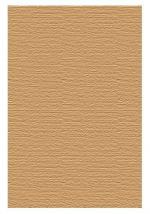|
This section contains 313 words (approx. 2 pages at 300 words per page) |
World of Scientific Discovery on Theodore William Richards
Richards was born in Germantown, Pennsylvania, on January 31, 1868. He was educated at home until the age of 14, when he entered Haverford College. He graduated from Haverford in 1885 and began graduate work in chemistry at Harvard. For his doctoral research, Richards analyzed the ratio of the atomic weights of oxygen and hydrogen.
Chemists in both Europe and the United States had been intrigued by William Prout's hypothesis, the idea that all atoms consist of various combinations of hydrogen atoms. One key to the verification of Prout's suggestion was a careful determination of atomic weights. If Prout were correct, the atomic weights of the elements should be nearly integral multiples of the atomic weight of hydrogen. Richards' doctoral research pursued that question with respect to oxygen.
After receiving his doctorate in 1888, Richards traveled twice to Europe, meeting Lord Rayleigh, Victor Meyer (1848-1897), F. W. Ostwald, Hermann Nernst, and other prominent chemists. In 1901 he was offered a position at the University of Göttingen. He declined the offer in favor of a full professorship at Harvard, where he remained for the rest of his life. Richards' doctoral research set the direction for the rest of his professional study.
He and his students spent the next two decades improving the techniques for determining atomic weights and calculating the weights of more than 50 elements. In recognition of this work, he was awarded the Nobel Prize in chemistry in 1914.
One project of special significance involved the atomic weight of lead. In 1913, Richards analyzed a sample of lead in radioactive ores provided to him by Kasimir Fajans (1887-1975), then at the University of Munich. Richards was able to show that the atomic weight of this lead was very different from that of lead found in non-radioactive ores. This discovery provided valuable support for the recently proposed concept of isotope s. Richards died in Cambridge, Massachusetts, on April 2, 1928.
|
This section contains 313 words (approx. 2 pages at 300 words per page) |


